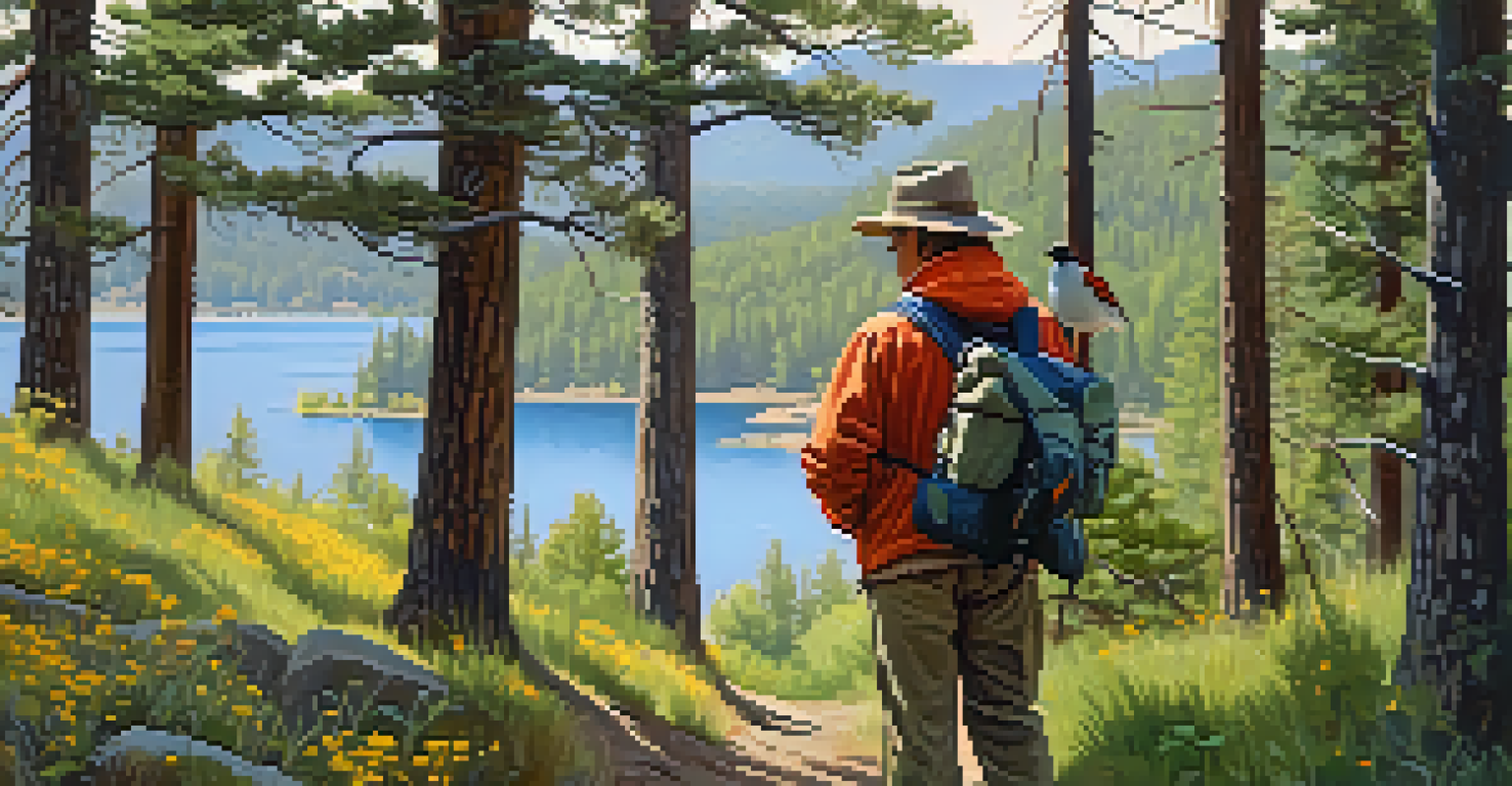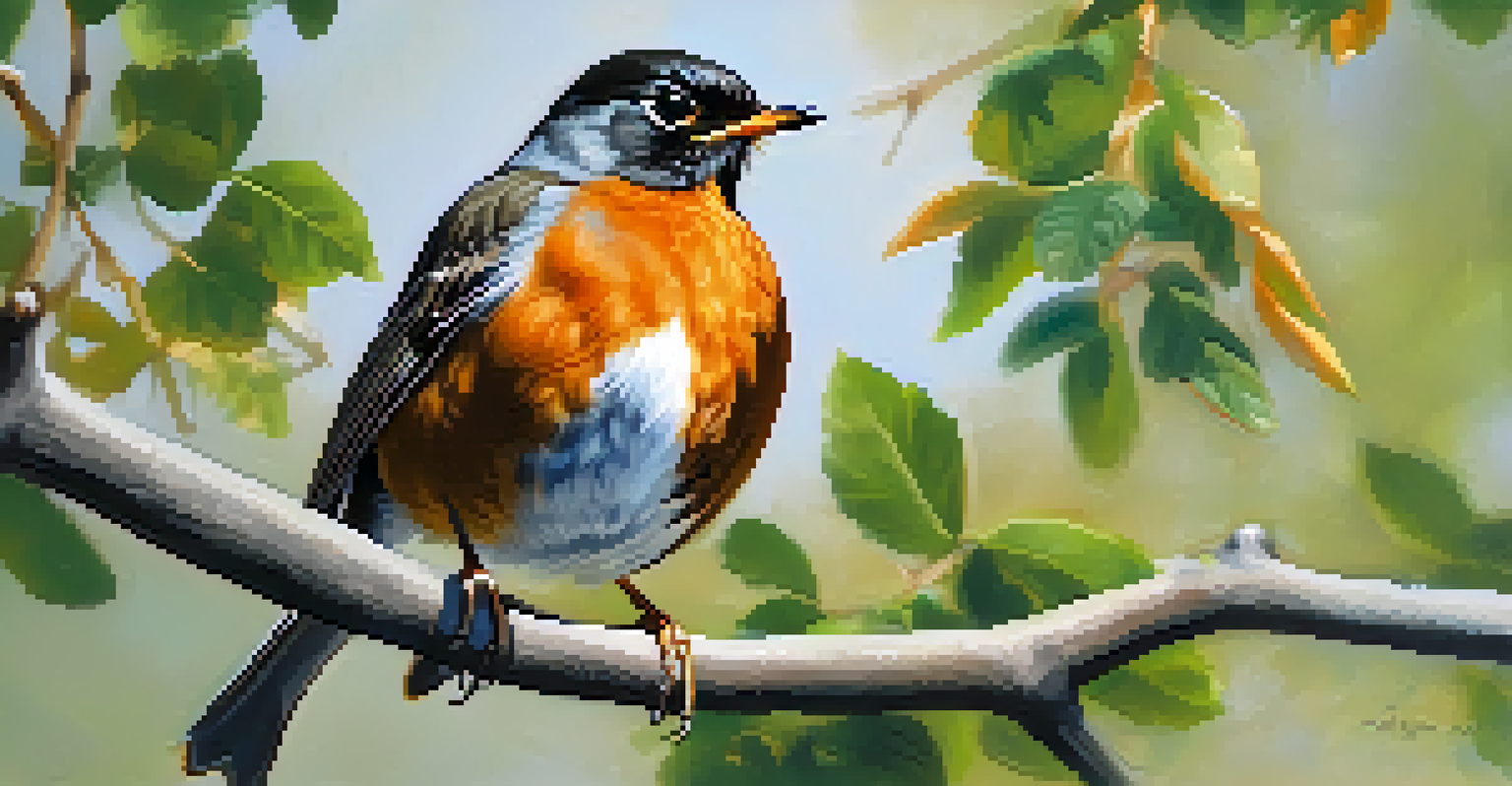A Guide to Local Bird Species in Big Bear for Enthusiasts

Introduction to Birdwatching in Big Bear
Big Bear Lake, nestled in the San Bernardino Mountains, is a haven for birdwatchers. The region's diverse habitats offer opportunities to see a wide variety of bird species throughout the year. Whether you're an experienced ornithologist or a curious beginner, the thrill of spotting local birds can be incredibly rewarding.
In every walk with nature one receives far more than he seeks.
The best time to observe these feathered friends is during spring and fall migrations, when many species pass through the area. With its mix of forests, meadows, and wetlands, Big Bear attracts birds from all over the western United States. Grab your binoculars and a field guide, because an adventure awaits!
In this guide, we'll explore some of the most common and fascinating bird species you might encounter in Big Bear, along with tips on where and when to find them. So, let’s dive into the world of local avian life!
Common Bird Species of Big Bear: An Overview
Big Bear is home to a variety of bird species, each contributing to the area's rich biodiversity. From the majestic Bald Eagle to the charming Mountain Chickadee, there's no shortage of avian wonders to discover. Understanding these species and their habitats can enhance your birdwatching experience.

Some common birds you'll encounter include the Western Bluebird, with its vibrant colors, and the American Robin, known for its cheerful song. Additionally, you'll see ducks and geese around the lake, especially during migration seasons. Keep your eyes peeled; you might even spot a rare visitor!
Birdwatching Hotspots in Big Bear
Explore prime locations like the Big Bear Discovery Center and Stanfield Marsh to enhance your birdwatching experience.
Familiarizing yourself with these birds not only enriches your experience but also fosters a deeper appreciation for the local ecosystem. Each bird plays a role in the environment, and learning about them can make your time in Big Bear even more enjoyable.
Birdwatching Hotspots Around Big Bear Lake
To maximize your birdwatching experience, it’s crucial to know where to go. Big Bear Lake offers several hotspots that are sure to delight any bird enthusiast. From the lake's shore to nearby trails, each location has unique offerings that attract different bird species.
Birds are indicators of a healthy environment.
One popular spot is the Big Bear Discovery Center, where you can find trails leading through diverse habitats. Another great location is the Stanfield Marsh, known for its wetland birds like herons and egrets. Don't forget about the scenic hiking trails around the lake—perfect for spotting birds in their natural environment.
Exploring these hotspots not only increases your chances of bird sightings but also allows you to enjoy the stunning landscapes of Big Bear. With each visit, you may discover something new and exciting!
Seasonal Birdwatching: What to Expect
Birdwatching in Big Bear varies dramatically with the seasons, each offering unique experiences. In spring, migratory birds return, filling the air with their songs and vibrant colors. This is the perfect time to spot species like the Lazuli Bunting and the Black-headed Grosbeak.
Summer brings a different charm as resident birds raise their young. Look for fledglings learning to fly and adults busy gathering food. The lush foliage provides great cover for birds like the Spotted Towhee and the Cassin’s Finch.
Seasonal Birdwatching Insights
Different seasons in Big Bear offer unique birdwatching opportunities, from vibrant spring migrations to summer fledglings.
As fall approaches, prepare for another wave of migratory species. Watching flocks of birds as they prepare for their journey south can be a breathtaking experience. Each season in Big Bear offers new opportunities to connect with nature and witness the incredible avian life.
Essential Gear for Birdwatching in Big Bear
Having the right gear can make a significant difference in your birdwatching experience. A good pair of binoculars is essential, allowing you to observe birds up close without disturbing them. Look for binoculars with a magnification of at least 8x, which strikes a balance between clarity and field of view.
Additionally, a field guide specific to the birds of California can be incredibly helpful. It allows you to easily identify species and learn about their behaviors. Don’t forget a notebook to jot down your observations and experiences—it’s a great way to track your sightings and reflect on your adventures.
Comfortable clothing and sturdy footwear are also important, especially if you plan on hiking to reach prime birdwatching spots. Being prepared enhances your overall experience and ensures you can focus on the beauty of the birds around you.
Respecting Wildlife: Ethics of Birdwatching
While birdwatching is a delightful pursuit, it's essential to approach it with respect for wildlife and their habitats. Keeping a safe distance from birds, especially during nesting season, is crucial to ensure they are not disturbed. Use binoculars or a camera with a zoom lens to observe without intruding.
Stay on marked trails to minimize your impact on the environment. This helps protect both the birds and their habitats, ensuring they remain undisturbed for future generations. Additionally, be mindful of your noise levels; even a quiet whisper can startle birds.
Join the Birdwatching Community
Connecting with local birdwatchers through events and groups can enrich your experience and support conservation efforts.
By practicing ethical birdwatching, you contribute to conservation efforts and support the health of local ecosystems. Remember, the goal is to enjoy and appreciate birds in their natural setting without causing harm.
Joining the Birdwatching Community in Big Bear
Connecting with fellow bird enthusiasts can enhance your birdwatching experience. Big Bear has a vibrant community of birdwatchers who regularly organize events, workshops, and outings. These gatherings provide excellent opportunities to learn from experienced birders and share your own experiences.
Consider joining local birdwatching groups or online forums where you can exchange tips, sightings, and even photographs. Engaging with others who share your passion can lead to new friendships and learning experiences.

Participating in community events not only enriches your knowledge but also fosters a sense of belonging. Together, you can explore the incredible avian life of Big Bear and support conservation efforts, ensuring that this beautiful area remains a sanctuary for birds.